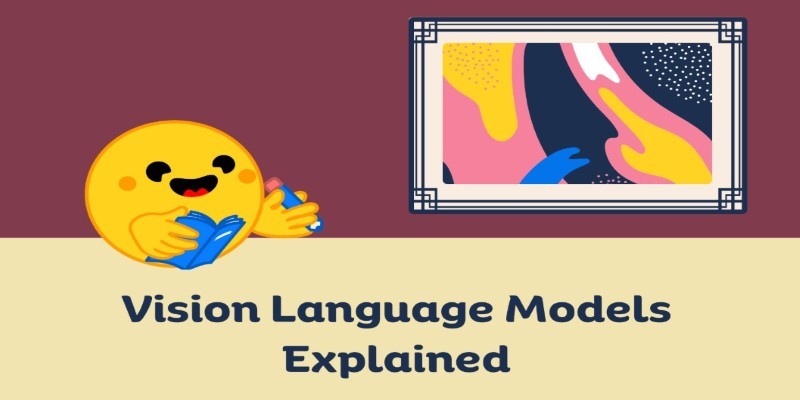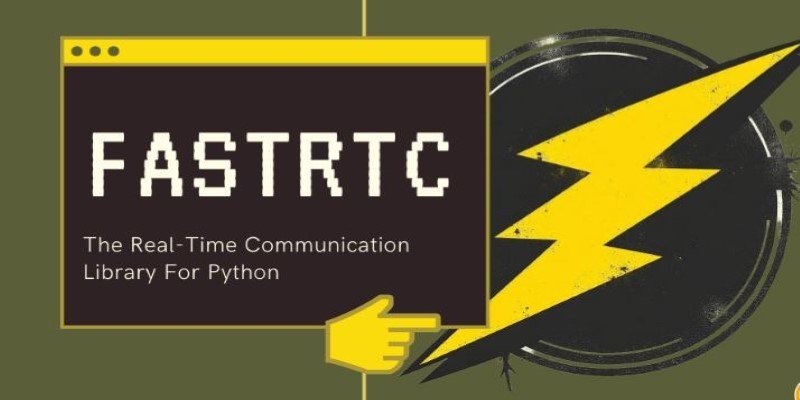Advertisement
Machines that can both see and describe what they see are no longer science fiction. Vision Language Models (VLMs) combine computer vision and natural language processing, enabling AI to interpret images and express what’s in them. This integration allows systems to caption photos, answer questions based on visuals, and even have conversations involving what they “see.” VLMs are already influencing how we interact with apps, devices, and services. They're not just smarter—they’re learning to understand the world in ways that feel natural to us.
Vision Language Models are trained on paired image and text data. These systems learn how visuals connect with descriptions or questions. For example, shown a picture of a child holding a balloon, a VLM might say, "A child is holding a red balloon outdoors." The model has learned not just to identify objects but also to explain them using natural language.
Their architecture involves a visual encoder and a language model. The visual encoder, often a convolutional neural network or vision transformer, interprets images. The language model processes sentences. The two are linked through a joint layer that learns how words and visual features relate.
These models are trained on massive datasets containing millions of image-caption pairs. Through this, they learn to recognize visual elements and the kinds of language typically used to describe them. A major goal during training is to predict the right description for a given image or find the correct image for a caption.
They're capable of generating image captions, matching text prompts to images, and performing visual question answering. For instance, given a photo and the question, "What is the woman doing?" the model might respond, "She is reading a book on the couch."
The process begins with pretraining. Models are exposed to large image-text datasets scraped from websites or created manually. They learn patterns by guessing missing words based on an image or predicting which caption best fits a picture. Some training methods use contrastive learning, which teaches the model to bring matching image-text pairs closer together and separate unrelated ones.

After pretraining, fine-tuning adjusts the model for specific applications, such as medical images, shopping items, or historical archives. At this stage, performance improves in more focused tasks.
Attention mechanisms help connect words to specific image parts. For example, if the sentence is "A woman is petting a dog," the model identifies "dog" in the image and links that word to the correct region. This multimodal attention is essential for understanding the relationships between image elements and language.
Traditional image classifiers might only label a scene as "kitchen" or "dog." Vision Language Models go further, offering descriptive, contextual sentences like "A black dog is lying next to a bowl on the kitchen floor." This shift toward a fuller understanding makes the models more useful in a wider range of situations.
VLMs are used in search engines, helping people find images through conversational queries, such as "sunset over the ocean with sailboats." They improve accessibility by generating detailed image descriptions for users with low vision. These captions offer more context than simple tags, capturing activities, colours, and settings.
In design and media tools, VLMs generate visuals from text prompts or provide feedback on artwork. Some educational apps use them to describe diagrams or walk students through complex visuals. In robotics, they support object recognition and task planning. For example, a robot might be told, “Pick up the green book on the shelf,” and use VLMs to understand and act accordingly.
However, limitations exist. VLMs often reflect biases found in their training data. If certain types of images are overrepresented, the model may make inaccurate or skewed assumptions. And while they perform well on common scenes, unusual ones—like a panda holding a frying pan—may confuse them or lead to generic output.
Another concern is overconfidence. These models can generate plausible-sounding answers even when they’re wrong. Without a built-in way to verify the information, users might mistakenly trust flawed outputs. This makes transparency and cautious use important, especially in healthcare or legal settings.
VLMs also face challenges with abstract ideas or subtle emotional cues in images. Recognizing a smile is one thing; understanding whether it’s genuine, sarcastic, or polite is much harder.
Research is moving toward more reliable, fair, and compact models. Developers are working to reduce bias, improve reasoning, and ensure models can explain how they reach conclusions. Smaller versions are being developed for use in mobile devices and offline systems, making them more accessible.

Interactive systems are emerging, capable of maintaining a conversation about what's happening visually. This enables applications, such as AI tutors or assistants, to respond to both text and images in real time.
Newer models are aiming to support more languages and visual styles. This will make them useful in international education, regional media, or culturally diverse environments.
Researchers are also looking into ethical development, making sure training datasets are better balanced and that models are less likely to reinforce stereotypes or errors. Clear documentation and testing protocols will be key as these tools continue to spread into daily use.
There is interest in creating models that can adapt quickly to new data without requiring full retraining. This would help in fast-changing environments, like news media or weather forecasting, where up-to-date visual understanding is important.
Vision Language Models bring together two powerful capabilities—seeing and describing—into a single system. They allow machines to do more than label images; they let machines understand and communicate what’s in them. From improving search to enabling smart assistants and accessibility tools, their reach is wide and growing. Still, the models aren’t perfect. They sometimes misinterpret or echo the flaws in their training data. The goal now is to make them more accurate, fair, and responsive. As they evolve, VLMs are shaping the way people interact with machines—making those interactions feel a little more human each time.
Advertisement

Explore the latest Twitter scam tactics, Meta Verified’s paid features, and how ChatGPT-4 is reshaping how we use AI tools in everyday life

Vision Language Models connect image recognition with natural language, enabling machines to describe scenes, answer image-based questions, and interact more naturally with humans

How to manage user input in Python programming effectively with ten practical methods, including input validation, error handling, and user-friendly prompts

DeepSeek's data practices spark global scrutiny, highlighting the tension between AI innovation, privacy laws, and public trust

Explore FastRTC Python, a lightweight yet powerful library that simplifies real-time communication with Python for audio, video, and data transmission in peer-to-peer apps

JPMorgan Chase cautiously explores generative AI, citing financial services security, ethics, compliance challenges, and more

Vendors must adapt to the AI assistant craze by offering real value, ensuring privacy, and focusing on intuitive solutions

LG introduces its Smart Home AI Agent, a mobile assistant designed to streamline household management by learning your routines, automating tasks, and syncing with smart devices

How to encourage ChatGPT safety for kids with 5 practical strategies that support learning, creativity, and digital responsibility at home and in classrooms

Intel and Nvidia’s latest SoCs boost AI workstation performance with faster processing, energy efficiency, and improved support

Use ChatGPT from the Ubuntu terminal with ShellGPT for seamless AI interaction in your command-line workflow. Learn how to install, configure, and use it effectively

A fake ChatGPT Chrome extension has been caught stealing Facebook logins, targeting ad accounts and spreading fast through unsuspecting users. Learn how the scam worked and how to protect yourself from Facebook login theft